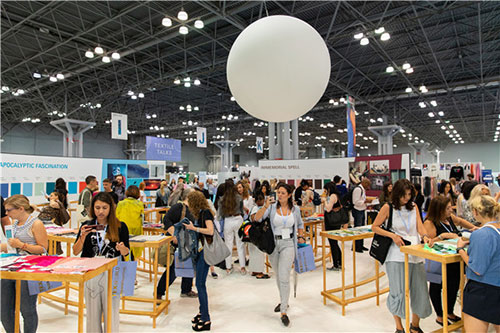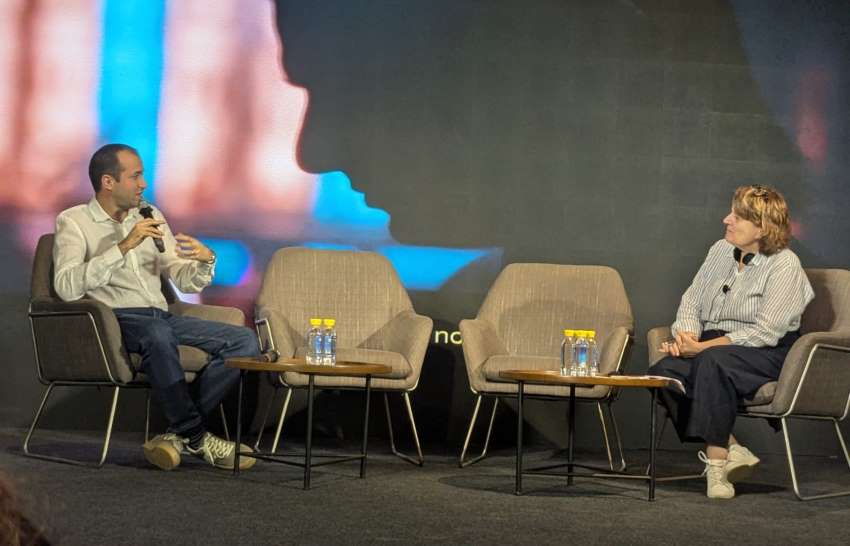FW
Imports of cheap yarn from countries such as China and Indonesia are hurting India’s textile industry. A large number of small and medium yarn producing units are on the brink of closure.
Owing to the US-China trade war as well as free trade agreements with Asean countries that allow duty-free imports into the country, viscose staple fiber yarn imports into India have surged about 200 per cent in the first five months of this financial year. China, with its excess capacity, has been at the forefront of exports, followed by Indonesia, driving down the price of VSF yarn. At the same time, demand for yarn has remained steady, growing at a compounded annual growth rate of 14 per cent in the past five years. Excess capacity in China is more than the Indian demand for the fiber and with so much oversupply through cheaper imports, domestic manufacturers are forced to match the low price that is taxing them heavily. To have a level playing field the industry wants the import duty on VSF yarn to be hiked from five per cent to at least ten per cent.
There are around 600 small, micro and medium enterprises engaged in the spinning of yarn, which is used to make a fabric that finds use in garment-making.
Comez has launched a new finishing machine for narrow fabrics. The Comez M-REI/600 is a laboratory and sampling machine that guarantees the same capabilities of a production machine. Its reduced dimensions from the feeding group to the collecting area give it a very compact design compared to competitors. This is a compact machinery for thermally varying and fixing the width of knitted fabrics, suitable for the narrow fabric sector, as well as for creating samples.
This finishing device has an on-board unwinder that allows the fabric, previously collected in rolls, to be unwound inside the oven automatically. The fabric is held from the selvedge by means of a succession of points that are fixed to two endless chains of adjustable distance. The fabric is hooked automatically with an electrically operated device while a manual control defines the degree of fabric enlargement before reaching the heat setting phase. The two chains feed the stretched fabric into a heated chamber, where the combined action of heat and ventilation quickly fixes its dimension. The fabric speed can be varied according to the type of fabrics.
Comez is a member of the Jakob Muller Group and a specialist in machinery for the production of narrow fabrics.
Four months of unrest in Hong Kong have hurt retail. Sales have fallen 23 per cent in August from a year earlier - the biggest decline on record - while the value of sales of jewelry, watches and other valuable items decreased by 47.4 per cent. Visitor arrivals dropped 39 per cent, with the number of mainland tourists to Hong Kong falling 42.3 per cent. It is estimated brands like Hermes and Tiffany will suffer sales declines of between 30 per cent to 60 per cent in the third quarter. Tiffany counts Hong Kong as its fourth biggest market. Watchmakers in particular are likely to be hurt – Hong Kong is a major centre for high-end timepieces. Hermes has been forced to temporarily shut some of its five stores as well as an airport shop in Hong Kong. However for those groups that have a well developed retail network across Asia, the Hong Kong protests do not necessarily mean losing money.
Hong Kong ranks among the world’s top five luxury destinations. It has long been a magnet for brands attracted by the flow of visitors from mainland China and accounts for between five per cent and ten per cent of the annual global sales of luxury goods.
"The past one and half year has been like a roller-coaster ride for the US textile market. During this period, the market witnessed several ups and downs mainly on account of the Sino-US trade war. Stakeholders Exhibitors at the recent edition of New York Show, wished this war to end quickly and the Sino-US economic and trade relations to resume as before."
 The past one and half year has been like a roller-coaster ride for the US textile market. During this period, the market witnessed several ups and downs mainly on account of the Sino-US trade war. Stakeholders Exhibitors at the recent edition of New York Show, wished this war to end quickly and the Sino-US economic and trade relations to resume as before.
The past one and half year has been like a roller-coaster ride for the US textile market. During this period, the market witnessed several ups and downs mainly on account of the Sino-US trade war. Stakeholders Exhibitors at the recent edition of New York Show, wished this war to end quickly and the Sino-US economic and trade relations to resume as before.
Desire to cooperate to sustain trade relations
Since the onset of the US-China trade dispute, the share of the Chinese textiles in the US market has witnessed a substantial drop. An enterprise from Shoaxing attending the show informed the US clients are not only downsizing their Chinese suppliers but also reducing their orders from every Chinese supplier. Small clients are adopting a wait-and-watch approach, while large clients are reducing their number of orders and cutting down the price by a large margin.
Wayne Buchen, Former Operation Senior Manager of Lacoste and Under Armor, emphasised trade relations between the US and China can never come to an end as both countries have a strong desire to cooperate with each other. This suggests that the Sino-US textile trade would not be stopped due to the ongoing trade war.
between the US and China can never come to an end as both countries have a strong desire to cooperate with each other. This suggests that the Sino-US textile trade would not be stopped due to the ongoing trade war.
Some experts feel it is much harder to purchase from other countries than from China as the country offers a superior supply chain and production technology. In addition, its complete industrial chain, infrastructures, logistics, traffic, and policy environment add value to products Made in China.
Many local American purchasers attending the Show noted that though the trade friction has resulted in loss of money, cost and communication between the two countries, it has enabled Chinese enterprises’ to accelerate their industrial structure, upgrade their products, improve their R&D level and productivity, and upgrade their technical services to strengthen their competitiveness in international competition. The trade friction is thus proving beneficial to China as it is encouraging its entrepreneurs to upgrade their facilities.
Product and service innovations to mitigate trade war effects
Many stakeholders are actively pursuing countermeasures and development solutions. They are focusing on product innovation, and strengthening their range of services. As the head of a Hubei-based home textile enterprise noted, every marketplace had developed its own fixed client group, so price changes or increase were hard to achieve. The linchpin for Chinese textile enterprises to maintain their competitiveness is to produce differentiated products so that clients cannot find substitutes of such a high cost performance ratio.
Many Chinese enterprises emphasize though American clients are capable of purchasing ready-to-wear from Cambodia and Bangladesh, they still rely on Chinese enterprises for fabric supply in the short term.
Artistic Denim Mills (ADM) aims at 100 per cent sustainability through the entire supply chain. By partnering globally recognized brands and manufacturers, ADM creates sustainable, ethical raw materials and earth-friendly fabrics that meet a wide variety of demands, such as the comfortable and sculpting properties of four-way stretch. An early pioneer of liquid dye technology featuring less sulfide contents than traditional dyes, the company is selective about the chemicals it uses, choosing those deemed to have a minimal impact on the environment, its employees and consumers.
For example, ADM exclusively uses pre-reduced indigo, decreasing its chemical use by 70 per cent when stacked against conventional denim factories. Rather than distressing denim with harmful chemicals and labor-intensive hand sanders, the company employs computerized laser technology to provide those unique fading patterns the fabric is known for. These lasers also have the added benefit of reducing the use of stones and chlorine during wet processing.
ADM makes denim that’s aniline-free—a non-toxic way of producing the traditional, iconic indigo blue that consumers associate with denim and jeans. Aniline appears on the restricted substance lists of some major clothing brands and retailers. To lessen denim’s impact on the planet and to help create a circular economy in textiles, ADM also uses pre-consumer recycled cotton fibers.
The North Face has launched new material known as Futurelight that aims to create a new paradigm in clothing and protection. The material has been created using a technology known as nanospinning. Nanospinning allows for adjustments in weight, stretch, breathability, durability, texture and constructions for both knit or woven fabrics during the manufacturing process—something the brand said gives it the ability to match products to a variety of activities and consumers.
The first Futurelight collections released by The North Face—the Summit Series, the Steep Series and the Flight series—will include jackets, pants and bibs common to outdoor sports, all produced using nanospinning. In order to ensure the technology would hold up in extreme conditions, the brand enlisted the help of outdoor athletes to field test the apparel in locations around the world.
Futurelight fabric in The North Face’s new collections will also be produced with “industry-leading sustainability. The facing and backing layers in the collection’s three-layer garments, for example, will feature 90 percent recycled materials. The North Face released the Summit Series, Steep Series and Flight Series on Oct. 1 through its own retail channels and through key retail partners.
The Union Ministry for Textile and Women and Child Development plans to develop an apparel cluster in the Noida region which will help it to create five lakh new jobs. The cluster will also distribute one lakh cloth bags in the next three months across the district.
Apart from this, the state government has asked the Yamuna Expressway industrial development authority (Yeida) to develop an “apparel park” in Sector 29. This park will be developed with an investment of Rs 5,000 crore in the next three years. It will manufacture all kinds of garments and accessories, including buttons, yarn and other materials at these units.
In addition, Yeida plans to develop a fashion street in the city on the lines of Paris fashion markets. The fashion street will have high-end fashion stores, restaurants and ramps.
Lenzing invites fashion industry players to use more environmentally friendly materials like Tencel and develop a sustainable fashion business. The aim is to introduce Tencel as a basic material for clothing that can be used from natural materials. Tencel is obtained from certified protected forest trees, then processed into fiber, then spun into yarn, then made into material. Through this mainstay fiber, Lenzing wants to make big changes by embracing every stakeholder, including consumers, and in particular also has a mission to support fashion designers to develop better since both Lenzing and fashion designers jointly share positive values about the concept of sustainability to build a more advanced and responsible fashion industry. Tencel is a solution for reducing textile waste, which causes environmental pollution.
The fashion industry is one of the biggest contributors to textile waste in the world. Fabric with fiber has good air circulation, makes clothes comfortable to wear and is able to maintain moisture and skin health. In addition, fabric made of fiber has a more vibrant color, is smooth and biodegradable. A sustainable fashion industry is important for social and economic life, given the current excessive consumption of fashion products that has dominated the world.
Pakistan’s textile exports increased 2.3 per cent during the first two months of the current fiscal year. Knitwear exports increased both in quantity and value by 10.7 per cent and 12.8 per cent respectively. Readymade garment exports increased both in quantity and value by 34.6 per cent and 7.5 per cent respectively. Bed wear exports increased both in quantity and in value by 20.4 per cent and 1.2 per cent respectively. The country’s textile exports constitute more than 60 per cent of total exports. Knitwear exports comprise 14.4 per cent of total exports. Readymade garment exports have a share of 12.5 per cent in exports. Bedwear has a 10.7 per cent share in exports.
The industry wants levies on cotton imports removed so that textile exports can go up. Exports fell one per cent during the last fiscal year as a strong negative price effect dominated the positive quantity effect. Exports, however, recovered 2.79 per cent in the July to August period of fiscal 2020.
The textile industry has asked for subsidised gas and electricity rates and tax breaks. Exporters are unclear about the actual energy tariffs for the purpose of quoting prices of products. A special energy package was extended early this year to the erstwhile zero-rated industry to provide it a competitive energy tariff to expand and increase exports.
In the first half of 2019, operating income of the textile and garment industry in the Jiangsu province of China grew 5.3 per cent. Profits were up 6.1 per cent. Cloth output was up 34.2 per cent and chemical fiber output was up 26 per cent.
A series of measures have made Jiangsu's textile industry rank eighth in the country. There are industrial bases in the province covering garments, knitwear, textiles, apparel, suits and trousers. The province is upgrading industries, deepening the structural reforms of the supply side and accelerating the construction of a modern industrial system. Technology centers are being established in leading enterprises, promoting research on and application of advanced technologies. At the same time, garment enterprises are being encouraged to develop personalized customization services via new production methods. Intelligent manufacturing is being implemented. Enterprises are induced to objectively analyze their own strengths and weaknesses and find the best transformation path based on their own situation. They are given guidance and policy support in solving problems, so as to create a good environment for enterprises to carry out the intelligent transformation and jointly promote industrial optimization and upgrading.
The textile industry is a pillar industry of China's national economy and plays an important role in expanding exports, attracting employment, increasing farmers' income and promoting urbanization.












